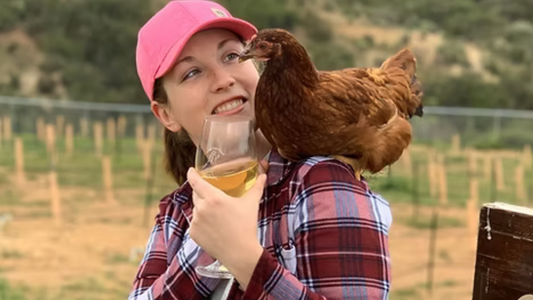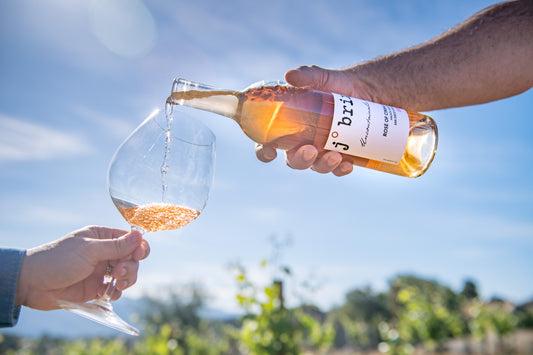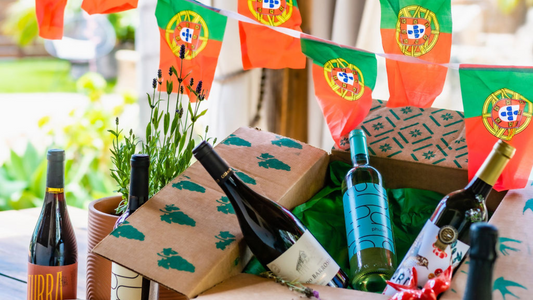We all know wedding planning can be stressful and when it comes to flowers, there are typically two types of people - the ones who have been filling their Pinterest boards with inspiration photos for years and those who don't even know where to start! We're breaking down everything you need to consider when tackling the florals for your wedding so you can feel confident, informed, and relaxed when it comes to deciding how your florals will look.
Step 1: Make a Wish List
You don’t need to start thinking about flowers right away—florals are influenced by many other wedding details, like your venue, guest count, and bridal party size. Once those big pieces are in place, it's the perfect time to begin mapping out what you'd like your florals to become.
First things first - your wish list! Most wedding florals fall into three main categories:
- Ceremony flowers - arch florals (either ground arches or swags attached to a structure), aisle starters, chair decor, welcome table, welcome sign
- Reception flowers - centerpieces, cake florals, bar arrangements, sweetheart table, dessert table, toss bouquet, seating chart, cocktail tables, and memory table
- Personal florals - the bridal bouquet(s), bridesmaid bouquets, boutonnieres, corsages, flower girl crowns, and flower petals
- Hot tip: it's traditional to provide some sort of floral component for family members, officiants, and people who are special to your day. This can add up, so it's a good idea to talk to those people ahead of time to ensure everyone is on the same page about whether or not they'll have florals as a part of your day!
Start with your ultimate wish list - everything you may want included in your big day. You can always pair things down to fit your budget as needed!
Step 2: Gather Your Inspo
Now that you know what you’ll need, it’s time to start dreaming! Head to Pinterest (or Instagram, TikTok, or even wedding blogs) and start building a vision board that reflects your style. As you save photos, pay close attention to color palette, seasonality, and texture—these details will help your florist (or your DIY team) bring your vision to life.
Pro tip: Don’t just save what you love—save what you don’t love too. Knowing what doesn’t resonate with you is just as helpful in communicating your taste and avoiding design miscommunications.
Once your inspo board is feeling complete, it’s time to set a realistic budget. If you have any must-have blooms, research whether they’ll be in season on your wedding date. Out-of-season flowers can be harder to find and significantly more expensive—or even unavailable.
Also, check the calendar: If your wedding falls within two weeks of a major floral holiday like Mother’s Day or Valentine’s Day, prices can surge due to demand. In that case, plan to increase your floral budget by at least 15% to account for higher costs.
Step 3: Find Your Florist (It Might Be You!)
With your budget in mind, your vision board ready, and your wish list complete, it's time to build your floral dream team! With rising wedding costs, it’s tempting to consider DIY—but before you commit, have an honest conversation with yourself (and your support crew) to ensure you have a realistic view of what it will entail and feel confident in the task. Here's what to think about:
Prep Takes Time: Flowers come in bulk, complete with extra leaves, thorns, and debris that need to be cleaned before you can even start arranging. This step alone can take hours—plan accordingly.
Timing is Critical: Flowers should be purchased 2–3 days before your event (you can stretch it to 5 days with refrigeration). If you have a busy schedule with out-of-town guests, a rehearsal dinner, or pre-wedding events, carving out time for floral work may be unrealistic.
Mother Nature Isn’t Always Predictable: Blooms may arrive late, damaged, or in the wrong color. DIY means staying flexible and ready to troubleshoot.
Hidden Costs Add Up: Beyond flowers, you'll need buckets, vases, ribbons, pins, tools, and design mechanics like chicken wire or foam. These extras can quickly chip away at your budget.
Who’s Doing Setup?: On your wedding day, while you’re relaxing or getting ready, someone needs to transport and set up the flowers—and pack everything out afterward. Know who that will be ahead of time.
If you're still feeling confident after all that—go for it! But hiring a professional wedding florist can take the stress off your plate, offer savings from bulk pricing, and ensure your vision comes to life in a stress-free way. Some florists, like us, may offer a DIY package - a way for you to have a hand in designing your flowers without all the details falling on you. Check out more information about our DIY package here!
If you decide to go the florist route, check platforms like Zola to browse portfolios, read reviews, and get a feel for each designer’s style and approach. Once you’ve narrowed it down, book a consultation and come prepared with inspiration photos and thoughtful questions:
- Do they provide a mock-up before the big day?
- Are you allowed to keep the arrangements, or do they handle strike-down?
- Can changes be made after booking?
These details will help you find someone who not only fits your aesthetic but also your planning style and budget.
Step 4: Finalize your plan
Once you’ve decided who will be handling your flowers—whether it’s a professional florist or your trusted DIY dream team—it’s time to finalize the details, lock everything in, and make sure everyone is on the same page.
If you're working with a florist, take time to carefully review your contract and make sure everything looks accurate. Don’t hesitate to ask questions about anything that feels unclear. Your agreement should outline exactly what’s included—how many arrangements you’re getting, what’s being set up and taken down, and what happens if substitutions are needed due to seasonal changes or supply issues.
If you're going the DIY route, confirm your flower order with your supplier at least three weeks in advance, and make sure you have a clear plan for what you're creating. Give yourself plenty of time to prep—this includes removing price tags from vases, processing stems, and organizing your space for arranging. The more you prepare ahead of time, the smoother things will go in those final days.
Whichever route you choose, strong communication is essential. Your wedding coordinator should know exactly where each floral piece belongs and who is responsible for placing it. Confirm the timeline for setup and cleanup, and make sure everyone involved knows when and where they’re needed. If friends or family are helping, offer clear instructions and expectations ahead of time to avoid any last-minute confusion.
Lastly, check in with your venue about any floral restrictions or requirements. Some spaces limit what can be attached to walls or structures, whether floral foam is allowed, or when vendors can access the space. They may also require proof of liability insurance—so be sure to relay any of these needs to your vendors early to avoid surprises.
Finalizing the logistics now means fewer headaches later—and a much smoother, more beautiful wedding day.
Step 5: Relax!
You’ve made it—now it’s time to relax and soak it all in! Be sure to carve out a few quiet moments to take it all in and celebrate the fact that so many people are there to cheer you on in this next stage of your life. At the end of the day, your wedding is about you and your partner—everything else is just details.
Cheers to a joyful celebration and a beautiful life ahead with the one you love!




